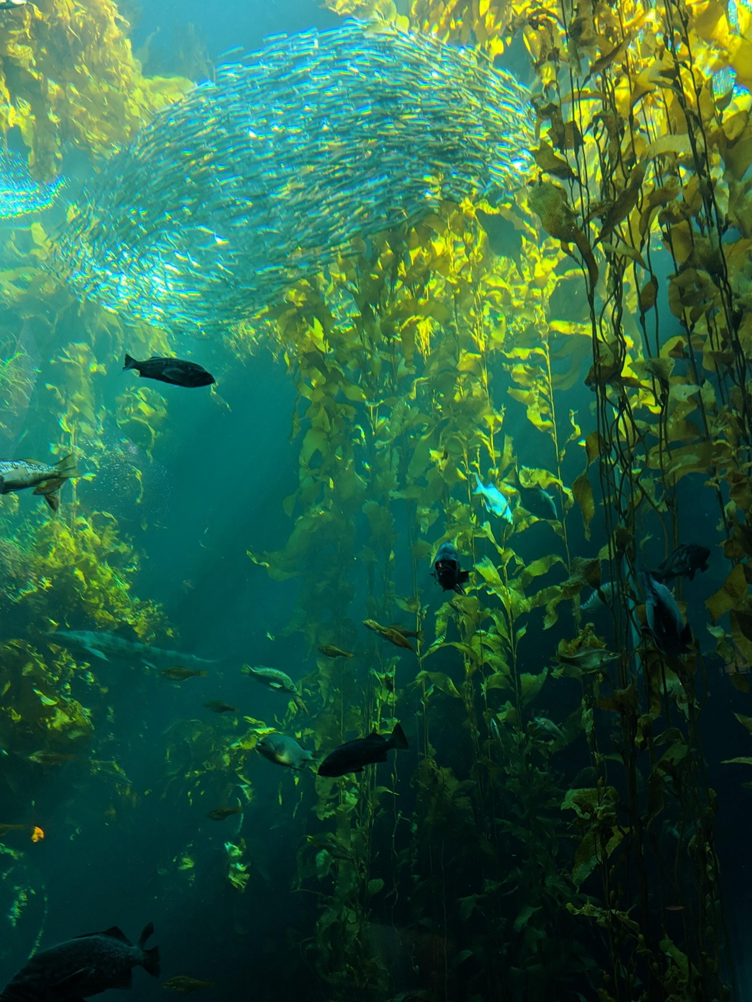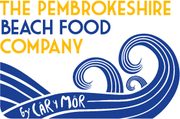
THE FUTURE IS SEAWEED
"The number of living creatures of all Orders, whose existence intimately depends on the kelp, is wonderful…. On the leaves (were) molluscs and bivalves. Innumerable crustacean frequent every part of the plant…. I can only compare these giant aquatic forests…. With the terrestrial ones in the inter-tropical regions. Yet if in any country a forest was destroyed, I do not believe nearly so many species of animals would perish as here, from the destruction of the kelp. Amidst the leaves of this plant, numerous species of fish live, which nowhere else could find food or shelter: with their destruction the numerous cormorants and fishing birds, the otters, seals and porpoises, would soon perish also: and lastly the Fuegians (the people of Tierra del Diego would decrease in numbers and perhaps cease to exist".
1833, Tierra del Diego HMS Beagle, Charles Darwin
The idea ............create sea life using existing, non-intrusive, seaweed farming techniques.
Background
I had watched "Abandoned", a film based on a true story of how a crew survived for 119 days at sea on a capsized boat. They survived because seaweed grew on the boat, the seaweed attracted fish and so the crew caught and ate the fish and survived!. I was chatting to Danny, my lobster man and he was moaning about all the seaweed that was growing on his lobster lines, which he simply hacks off and throws back into the sea. There I was, not too many miles away, hopping around the rock pools with my pair of scissors delicately harvesting these precious fronds of seaweeds. “One man’s weed is another man’s treasure”. !!
I was fascinated on how life clings onto objects at sea. Whether that was a capsized boat or a lobster pot line. So as a little experiment we left 2 “ghost” pots in the sea for 5 months from December (2019) to May (2020) to see what would grow . Here's the result:

There was 10 kg of seaweed on each 50ft (15.24m) length of rope.
On Each rope I identified the following species growing:
Kelp (laminaria digitata)
Sugar Kelp (laminaria saccharina)
Dulse (Palmaria palmata)
Sea Lettuce (Ulva lactuca)
Mussels

Each rope was simply left in the water, no sowing, no ground preparation, no watering, no feeding, just left to nature to do its thing. In 5 months this whole new life system had formed and this had a massive knock on effect to the surrounding area as well. Fish were swimming in between the seaweed, starfish where doing star fish things and spider crabs were feeding off the mussels.
It was the equivalent of popping into your garden (which you haven’t seen/been in for 5 months) and seeing vegetables thriving without any intervention.
Well I was amazed, all that growth and life in just 5 months! My next question was can this be scaled? Can this have a positive impact not just locally but globally?
There are an increasing number of individuals and businesses looking at taking responsibility for their activities and the impact on our environment .The carbon neutral/ negative culture is growing and this is offset is usually achieved via re-growing forests on land. However, land is highly sought after and availability is low as we already struggle to meet our current land requirements for crops , animal farming and grazing, the provision of wild spaces”, additional housing, business requirements and the move towards carbon off setting. Climate change will only increase this pressure on land with:
- Rising Sea Levels
- Food Security
- Extreme weather
- Availability of Freshwater
The carbon offsetting debate is a contentious one- does it have an impact? Is it just green washing? As the climate crisis increases it is a question more and more people are asking themselves. In my view it could play a very important role if done correctly but I feel the answer does not lie in growing trees, I believe the answer lies in the great big blue sea.
Now the whole carbon offsetting and more so Blue Carbon offsetting is a bit like the Wild West,- unregulated, and at times a victim of dubious schemes and unproven results. Whilst the easiest thing in the world would have been to pay a few thousand pounds to a scheme and "offset" my “business carbon footprint” writing all over our websites and social media that we are carbon neutral or carbon negative (locking away more carbon than our business emits) it somehow didn’t seem right to me. I wanted to see the benefits of any involvement in a scheme with my own eyes and to see the possible implications of my actions as well.

"I wanted to know and be completely sure that my money was developing a positive change........"
With hindsight this probably not the best decision I made! as I am now starting another project on top of reopening a 16th century pub, picking seaweed, creating seaweed deli products and selling Barti Rum, all whilst trying the whole work/life balance with a young family.
Since the day I decided to make a change and adopt a Blue Carbon approach, we at Beach Food and Barti have been working hard on finding a real solution to restore sea habitats. The pandemic caused a huge delay on the project but finally now, in 2022, things are starting to move forward. We have just been awarded a SMART Wales grant so that we can build a road map on how to develop seaweed growing systems locally and offshore. We have been working with Swansea University in reviewing different types of growing systems and we have just started to work with MEECE, an organisation with a team of marine engineers, in testing rope growing systems with different types of natural rope, which we hope to install later this summer.
The whole process will be continually surveyed by marine engineers, so we will know the positive and negative impacts that we are having.
So Why choose Blue Carbon?
Off setting through seaweed and sea habitats is unproven, I know that. Currently you can’t even claim a “carbon credit” for Blue Carbon as scientists simply do not know the carbon cycle in seaweed and how much carbon is locked away and for how long .This we may not know for another decade or even another century.
In the meantime though I will continue with our project, I will let the scientists and bigger organisations determine whether Blue Carbon is a myth or reality because what I do know is that this system has the potential to create and sustain life and for the moment, that is all I need to know.
Thank you for reading
Jonathan Williams


